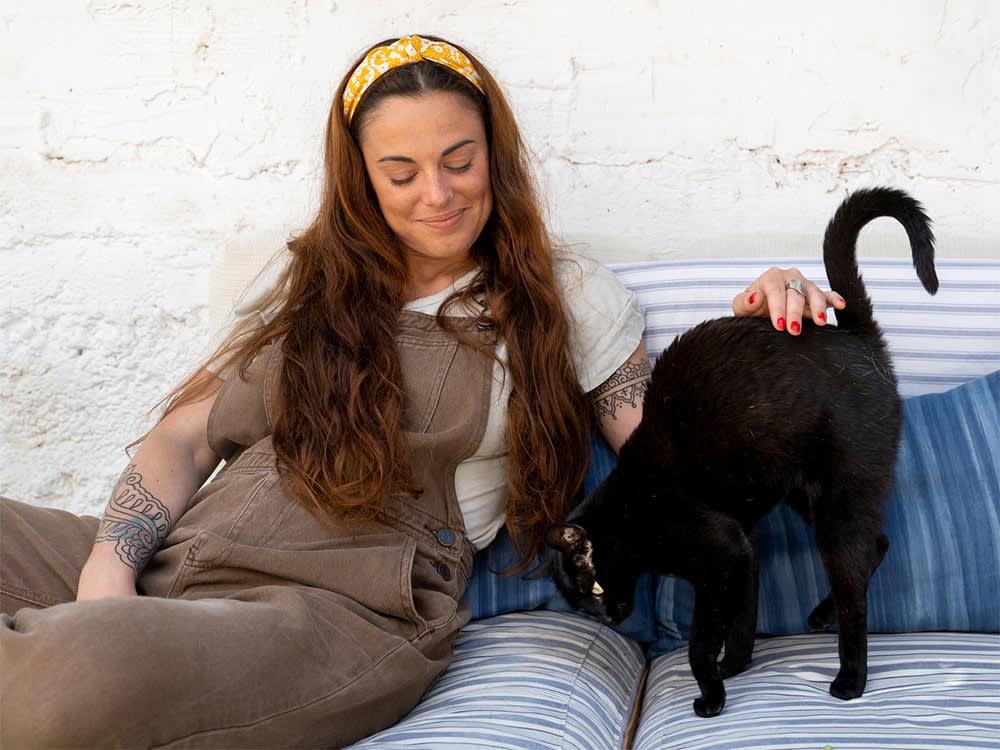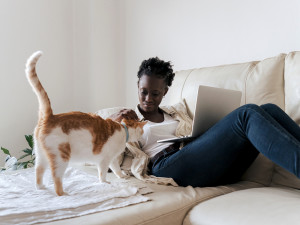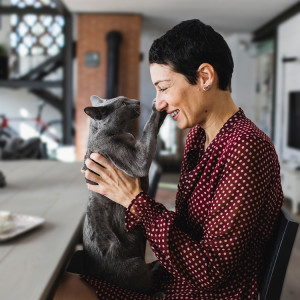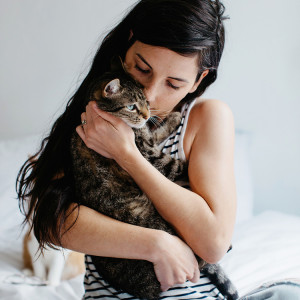With the Help of Cats, Humans Can Land on Their Feet Too
Turns out, cats have made medical breakthroughs simply by being...cats.

Share Article
When it comes to our cats, we give and we give so they can have the best possible lives, even if, some days, they act indifferent to us. But, it turns out, their ability to “land on their feet” may be the great equalizer, making it possible for them to give back to people in a big way. The way cats move — their agility, acrobatic capabilities in the air, and their sensational balance — may actually be the key to helping a lot of people.
Specifically, the way cats adjust, even when they stumble, could unlock treatment options for people with partial spinal-cord damage and help them walk better and with more balance. In other words, the very essence of who cats are could be an actual medical breakthrough. (They say “you’re welcome,” obviously.)

Get (totally free) deals for food, treats, accessories, tech, and way more pet parenting must-haves.
opens in a new tabHow, Exactly, Cats’ Coordination Can Help Humans
In a January studyopens in a new tab, researchers examined how cats recover from a stumble, and they learned that the response occurs all over the body, not just in the leg that was wobbling. In the experiment, the researchers touched the top of one back foot when cats were walking, doing so in different phases of their stride, and observed how the cat rebalanced after the disruption. When researchers fussed with the cats’ back paws, they maintained their balance — it’s what they do, after all! — by adjusting their stride in muscles all over their body. They simply readjusted their balance to the three legs the researchers weren’t touching.
The cats made the biggest adjustments on their back leg on the opposite side of the body from the one that was touched. The muscles that cause the knee and hip joints to bend became more active, they lifted their toes higher, bent their joints more, increased their stride, and kept their feet off the ground longer.
Why Are Cats the Best Model to Help Injured Humans Walk Better?
Previously, scientists have done a lot of research on neurological control of movement on mice, but for the questions addressed in this particular study, cats are a better model for human movement. Because mice move in a crouched position, they are far less likely to fall or suffer balance issues, regardless of what kind of feedback their limbs give to the rest of the body. Cats, like humans, require sensory information from their limbs to move and to balance.
The activation of neurons in response to touch could help people with spinal cord injuries because the activation improves spinal neural function below the injured region. Researchers hope their work will improve our understanding of how balance is controlled and allow the reactivation of someone’s connection between their brain and their spinal cord. So, for all this, we should send our gratitude to cats, even if they are too busy ignoring us at the moment to care.

Karen B. London, PhD, CAAB, CPDT-KA
Karen B. London, Ph.D., is a Certified Applied Animal Behaviorist and Certified Professional Dog Trainer who specializes in working with dogs with serious behavioral issues, including aggression, and has also trained other animals including cats, birds, snakes, and insects. She writes the animal column for the Arizona Daily Sun and is an Adjunct Professor in the Department of Biological Sciences at Northern Arizona University. She is the author of six books about training and behavior, including her most recent, Treat Everyone Like a Dog: How a Dog Trainer’s World View Can Improve Your Lifeopens in a new tab.
Related articles
![]() opens in a new tab
opens in a new tabYour Cat Hates It When You Frown
According to a new study, cats know what their parents’ facial expressions mean. Just, uh, FYI.
![Short haired woman holding a gray cat that's playfully pawing at her nose]() opens in a new tab
opens in a new tabDoes Your Cat’s Fur Pattern Determine Their Personality?
It’s a little more complicated than that.
![Tattooed and pierced woman wearing a black and white striped shirt and holding an upset looking cat]() opens in a new tab
opens in a new tabIs My Cat Angry at Me? How to Tell if Your Cat is Upset
Cat behaviorist Kristiina Wilson on how to tell if your cat is grumpy—or just kind of like that.
![dark-haired woman hugging cat that has imprinted on her]() opens in a new tab
opens in a new tab10 Signs Your Cat Has Imprinted on You
Feeling like you have a little shadow these days? Here’s why that’s happening.
![Black cat staring at a cat toy]() opens in a new tab
opens in a new tabHow to Play With Your Cat
Cat behaviorist Cristin Tamburo’s got a game plan.
![cat snuggling man]() opens in a new tab
opens in a new tabWhat’s Your Cat’s Love Language?
Five surprising ways cats show affection (and how you can show it back), according to a cat behaviorist.








